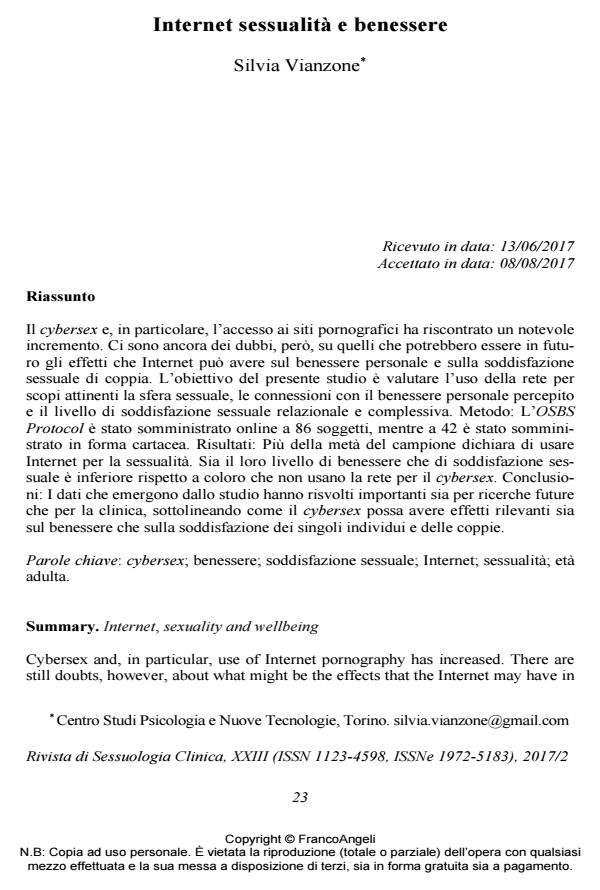Internet, sexuality and wellbeing
Journal title RIVISTA DI SESSUOLOGIA CLINICA
Author/s Silvia Vianzone, Ivan De Marco, Eddy Chiapasco
Publishing Year 2017 Issue 2017/2
Language Italian Pages 16 P. 23-38 File size 295 KB
DOI 10.3280/RSC2017-002002
DOI is like a bar code for intellectual property: to have more infomation
click here
Below, you can see the article first page
If you want to buy this article in PDF format, you can do it, following the instructions to buy download credits

FrancoAngeli is member of Publishers International Linking Association, Inc (PILA), a not-for-profit association which run the CrossRef service enabling links to and from online scholarly content.
Cybersex and, in particular, use of Internet pornography has increased. There are still doubts, however, about what might be the effects that the Internet may have in the future on personal well-being and couples’ sexual satisfaction. The present study aim to evaluate the use of the Net for purposes related to the sexual sphere, personal wellbeing, and the level of relational sexual satisfaction. Method: The OSBS Protocol was administered online to 86 subjects, while it was administered in paper form to 42 subjects. Results: More than half of the respondents say they use the Internet for sexuality. Both their level of wellbeing and sexual satisfaction is lower than those who do not use the Net for cybersex. Conclusion: The results of this study have important implications for future research and clinical practice, pointing out how cybersex can have significant effects on both wellbeing and the satisfaction of individuals and couples.
Keywords: Cybersex; wellbeing; sexual satisfaction; Internet; sexuality; adulthood.
Silvia Vianzone, Ivan De Marco, Eddy Chiapasco, Internet sessualità e benessere in "RIVISTA DI SESSUOLOGIA CLINICA" 2/2017, pp 23-38, DOI: 10.3280/RSC2017-002002